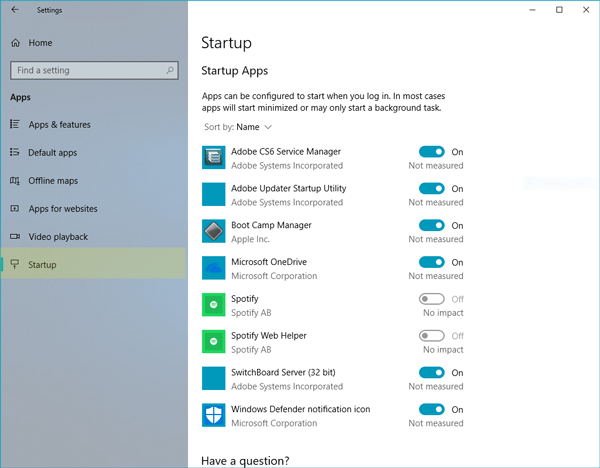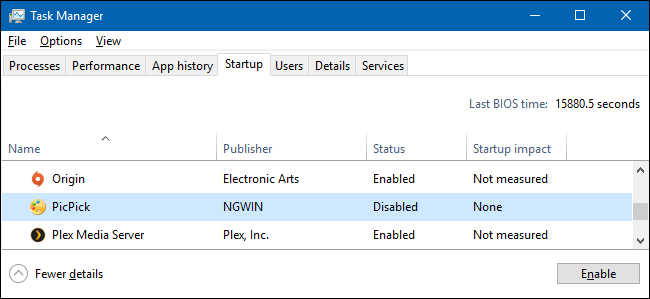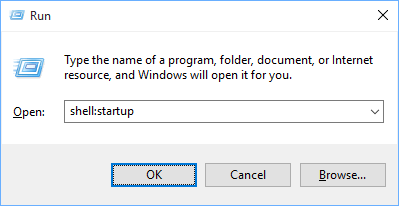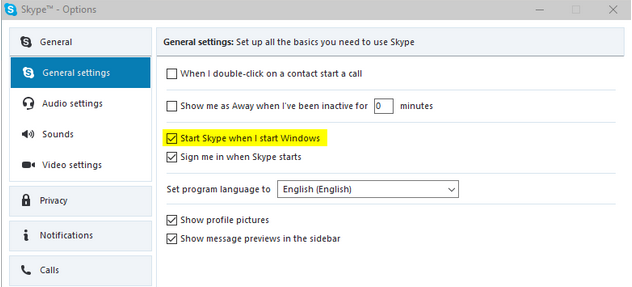How to Manage Startup Apps on Windows
- Jan 03, 2019

Wanna manage programs that run automatically at startup in your Windows? How to enable the automatic-launch for the apps you need to use everything you boot up your PC and how to disable those unnecessary startup apps? This post will teach you how.
To enable/disable an app so it will/will not launch when you turn on your PC:
- Click the Start menu in the bottom left corner, and click Setting icon
- Choose Apps in Settings, and then click the Startup tab on the left pane
- Locate the app you want to enable/disable on the right pane
- Slide the toggle next to the app to On/Off, to enable/disable the auto startup

Alternative way to manage which apps will automatically run at startup:
- Right click Start menu (or the task bar at the bottom), and choose Task Manager
- Select the Startup tab in Task Manager to display the startup list
- Right click the app you want to change, and choose Disable/Enable

Then how to make an app run automatically at startup if it does not show up in the list? If a program automatically starts in Windows, a shortcut of this program is supposed to exist in the Startup folder.
To add an app to the startup list in Windows 10, try to locate the app shortcut first:
- Click the Start menu in the bottom left corner
- Scroll to find the app you want to run at startup
- Right click the app, and choose More > Open File Location

As the location where the shortcut to the app is saved opens, do the followings:
- Press Windows logo key + R to bring up the Run window
- Type shell:startup in the box and click OK button

Or you can quickly access to the Start up by this alternative way:
- Press Windows + R to open up the File Explorer
- Copy and past the following path into the address bar and hit Enter key
%APPDATA%\Microsoft\Windows\Start Menu\Programs\Startup

As the Startup folder opens, you can copy and paste the shortcut to the app from the file location to the Startup folder. After that, the app will start automatically at the next time you boot your PC. If you do not find the option for Open file location when right-clicking on the app in the Start menu, that means this app can’t run at startup.
You may have noticed that some programs have the option in their settings labeled like ‘Load When Windows Starts’ or ‘Launch When System Starts’. In that case you can head to enable the option in the settings to allow the auto-launch of this app.

Note that adding too many programs to the Startup folder may cause your PC to boot slowly. Besides, you can add a shortcut for a folder, document, URL address or anything else into the Startup folder and make it run at startup in Windows.
All the methods mentioned above is how to manage startup programs for the current user account. If you want to set a program to run on startup for all users accounts, you need to add its shortcut in the common startup folder. Here’s how to open it up:
(1) type shell:Common Startup in the Run box, and hit Enter key;
Or (2) copy and paste the following path in the address bar of Explorer and hit Enter
%ProgramData%\Microsoft\Windows\Start Menu\Programs\StartUp
Now you should know how to effectively manage your startup apps in Windows.
Popular Posts
- What Kind of Programs do You Think are Necessary in Windows 10?
- What’s SpyHunter and How to Fix the File Being Quarantined
- How to Forcibly Remove a Program That Won’t Uninstall in Windows
- 3 Tips to Remove a Program that Won’t Uninstall
- How To Uninstall Applications On Windows 10 – Program Removal Guides
- Tutorial: How to Remove & Uninstall Programs / Applications on Windows 7
Comments
You must be logged in to post a comment.